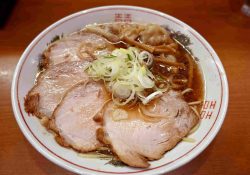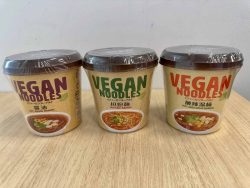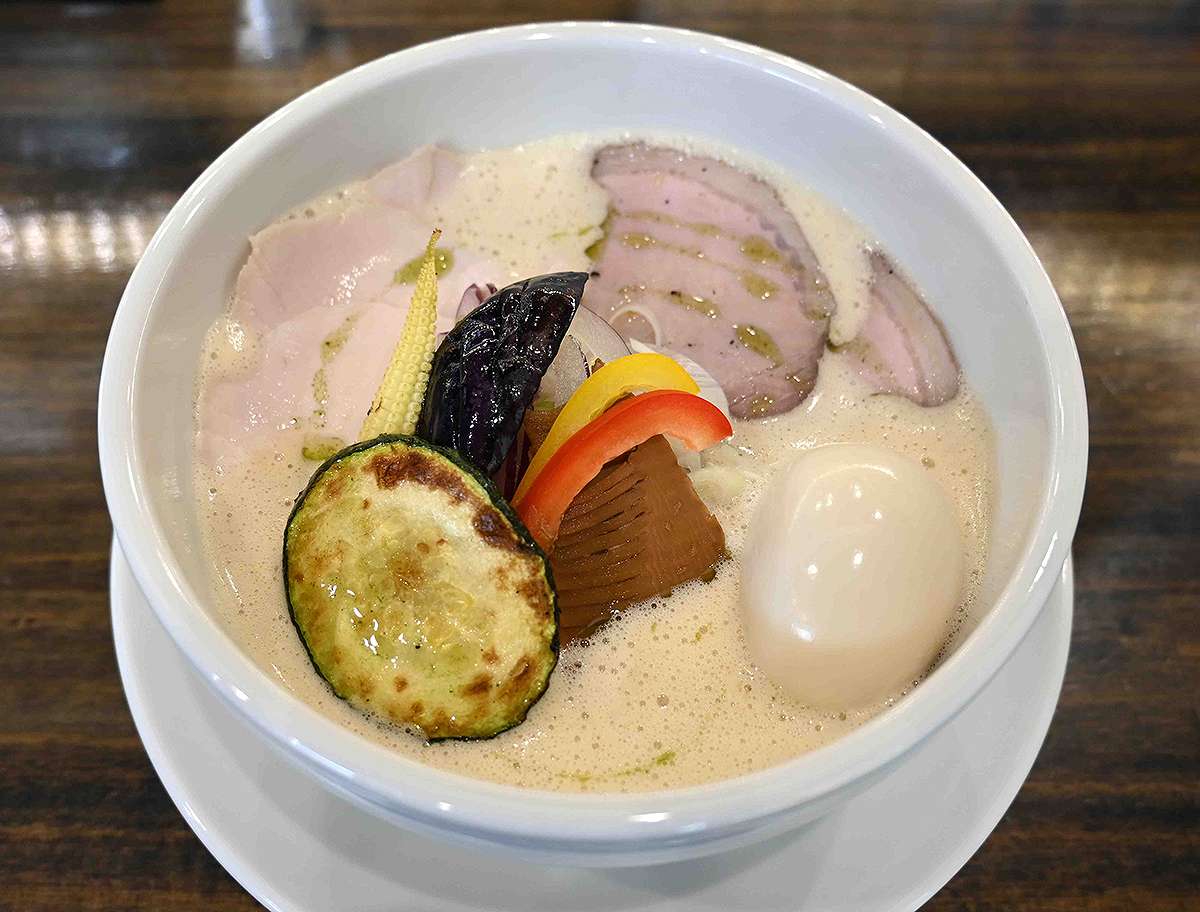
Special chicken paitan shio (salt) ramen with additional grilled vegetables and ajitama egg (¥1,300)
13:37 JST, October 11, 2023
“Japan has many high-quality ramen stores,” says Korea-born Wonsik Choi. “My aim was to establish a ramen outlet that appeals to Japanese ramen aficionados.”
Choi, 40, who runs the Menya Shido eatery near JR Matsudo Station in Matsudo, Chiba Prefecture, had originally intended to become a composer after graduating from music college in Korea. However, in a sharp change of career, he instead plumped to try his luck in the culinary world.
Menya Shido, which opened last September offers ramen dishes based on a combinational soup comprising beef bone broth and chicken paitan broth. The intersection-situated store is an about five-minute walk from Matsudo Station’s West Exit.
-
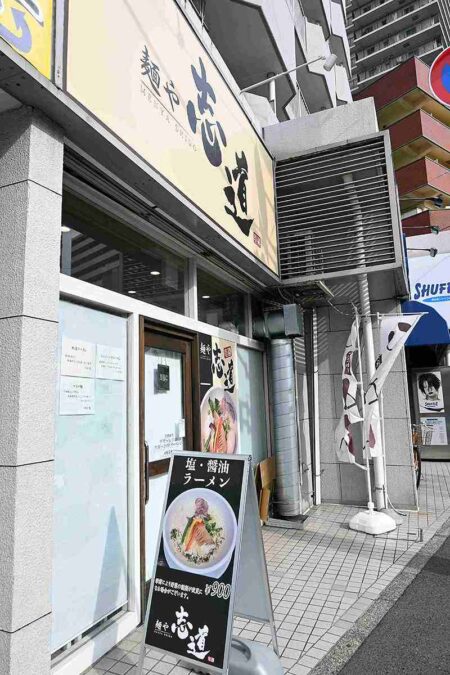
An exterior view of Shido
-

A description of limited-edition ramen is posted outside the shop.
-
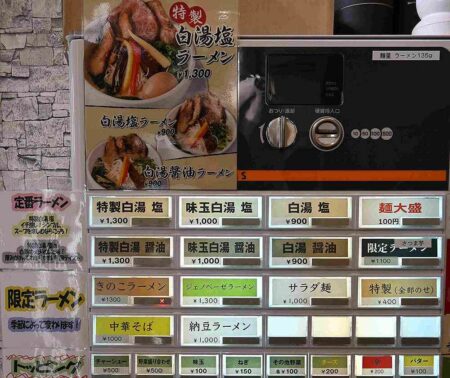
The ticket vending machine offers a wide variety of ramen dishes.
-

Shido, as seen at night
The clean and cozy establishment features an extensive menu. In addition to paitan shio (salt) and paitan shoyu (soy sauce) ramen, the ticket vending machine also offers various other intriguing offerings, including sweet potato, mushrooms, Genovese and natto (fermented soybeans). A small refrigerator to keep wine sits next to the ticket machine, while a wall-mounted blackboard offers tips on a la carte dishes that go well with various alcohols.
-

Assorted Vegetables and Roast Pork (¥1,200)
-
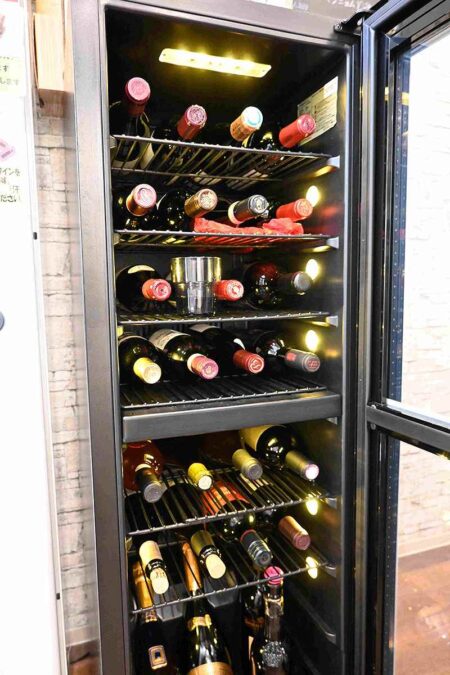
The small refrigerator to keep wine stores a carefully selected collection of bottles.
-
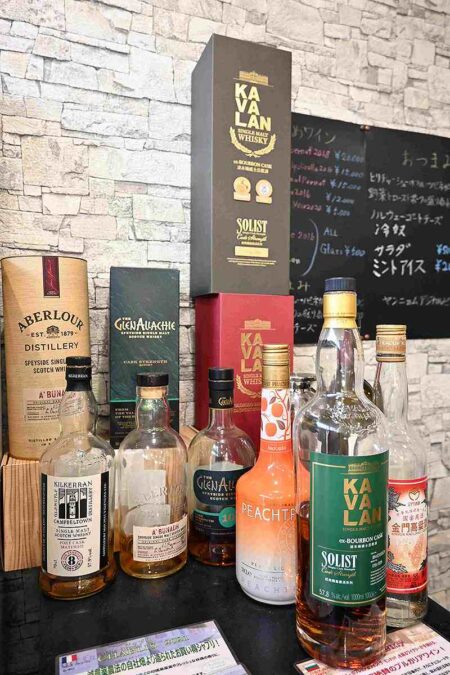
The shop also offers a wide range of alcoholic drinks other than wine.
-
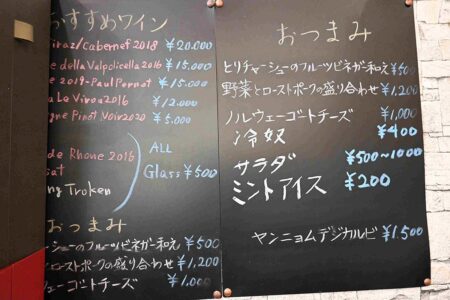
The a la carte menu offers advice about food-alcohol pairings.
I opted for the store’s signature dish: special paitan shio ramen (¥1,300), which comes with grilled vegetable toppings.
I watched as Choi placed pre-cooked eggplant, baby corn, and zucchini on the shichirin charcoal grill to reheat. The store’s choice of vegetables changes with the seasons.
“I use a special blend for the kaeshi sauce that’s unique to this shop,” said Choi, while placing the sauce in a bowl. “I blend white wine with sea salt and rock salt, while red wine is used to blend three different types of soy sauce, each of which includes shiitake mushrooms, kombu and dried fish.
An unusual and interesting point is that Choi adds kinako (soybean flour) to the mix. “It’s a secret addition,” he says while pouring the soup into a bowl and mixing it with a blender.” It makes all the difference in taste.” The broth bubbled delightfully, prompting me to ask if the dish was a “foamy ramen.”
In response, Choi replied: “No, the bubbling is to make sure everything comes together. I didn’t even know there was such a thing as foamy ramen!”
-
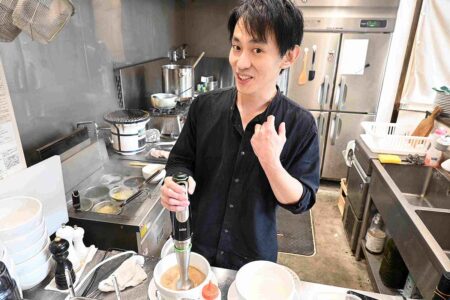
“It’s not a foamy ramen dish,” shop owner Wonsik Choi says.
-
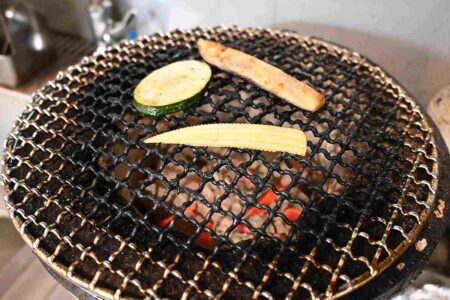
Vegetables are heated on a shichirin grill.
-
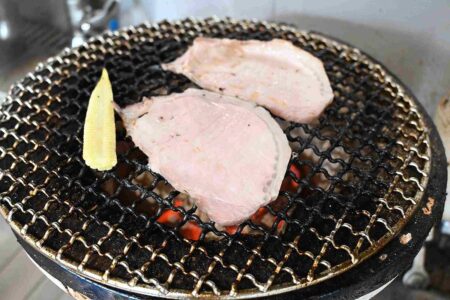
Pork chashu is heated on a shichirin grill before serving.
-

The medium-thin noodles complement the soup delightfully.
-
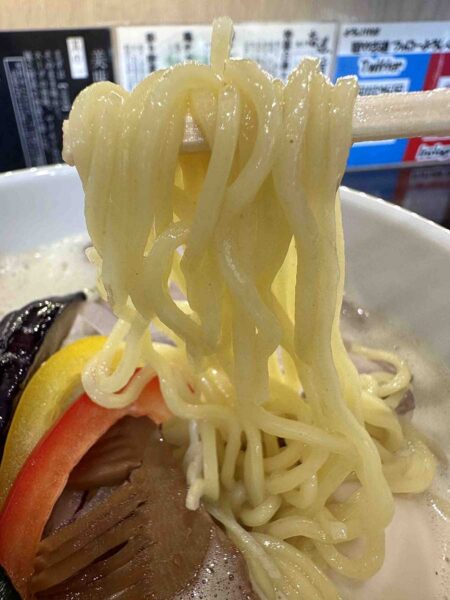
The medium-thin noodles go well with the tasty soup.
-

Shop owner Choi adds kinako (soybean flour) to the kaeshi sauce.
-
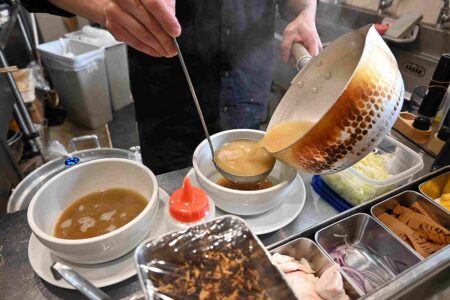
Pouring soup into a bowl
-
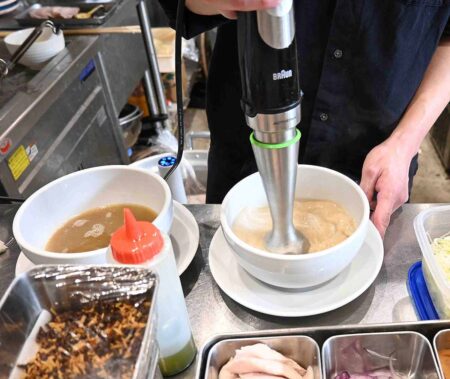
The soup froths quickly when blended with a mixer.
Mixing the liquid well allows the soup to achieve a uniform flavor. It also makes the ramen more “mellow” and “gentle,” which ties in with the shop’s overriding concept. The final touch for the dish was a drizzle of homemade herb oil made from Italian parsley and basil.
The ramen was beautifully presented, comprising a delightful white broth and a variety of toppings, including colorful red and yellow bell peppers.
The soup — which had a mild, alluring flavor and was crafted using a combination of 30% beef bone broth and 70% chicken broth — went down delightfully.
Preparing the soup takes time and effort: Choi simmers beef bones with garlic, onion, ginger, celery, bay leaves, and black pepper for 36 hours. “Beef bones are big, so you need that kind of time to get the right flavor,” he explained.
After removing the beef bones, Choi adds chicken bones, whole chicken, and momiji (chicken feet) then simmers the stock for a further six hours. In effect, it takes about two full days to make the soup. The medium-thin noodles, sourced from a nearby noodle factory, were delicious and complemented the broth very well.
-
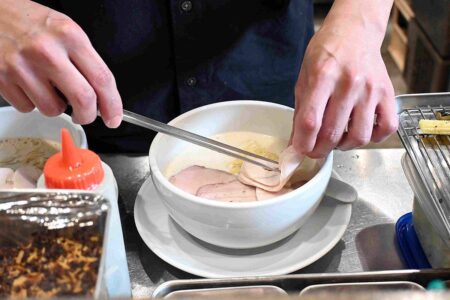
Carefully arranging pork and chicken chashu
-

The chicken breast chashu is tender and flavorsome.
-

The shop’s pork chashu is cooked at a low temperature.
-
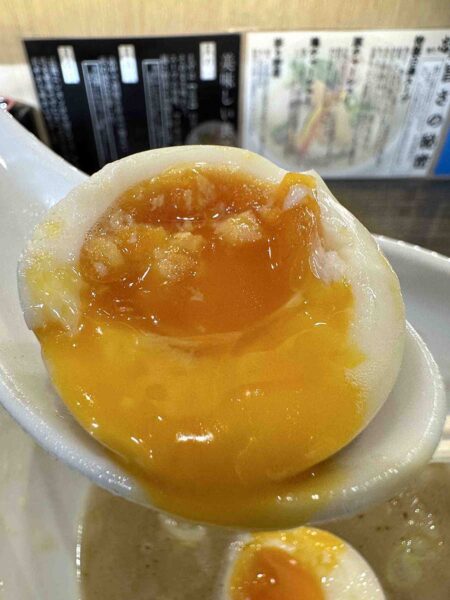
Semi-boiled ajitama
-
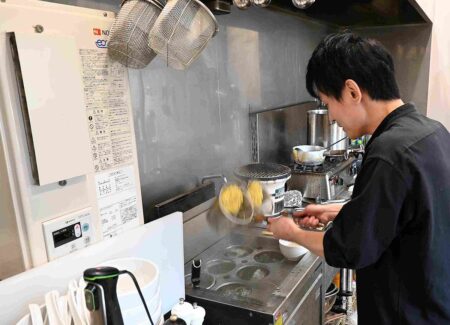
Cooked noodles
Choi cooks the pork loin and chicken breast chashu toppings at a low temperature before roasting the pork chashu on a shichirin charcoal grill prior to serving, imbuing it with a fragrant flavor. Other toppings include homemade pickled bamboo shoots seasoned with soy sauce, grilled vegetables, seasoned eggs, bell peppers, green onions and red onions.
“Most of the ingredients are prepared in-house. Perhaps the only thing that isn’t homemade is the natto (fermented soybeans),” he added with a laugh.
I recommend adding lemon juice mid-meal, as it introduces a somewhat tart nuance that gives the dish a fresh flavor. “Many ramen shops offer vinegar [for this purpose] but vinegar can overwhelm a dish,” Choi noted. I supped the delicious soup enthusiastically while savoring the shop’s novel flavors and approach.
Deep impression
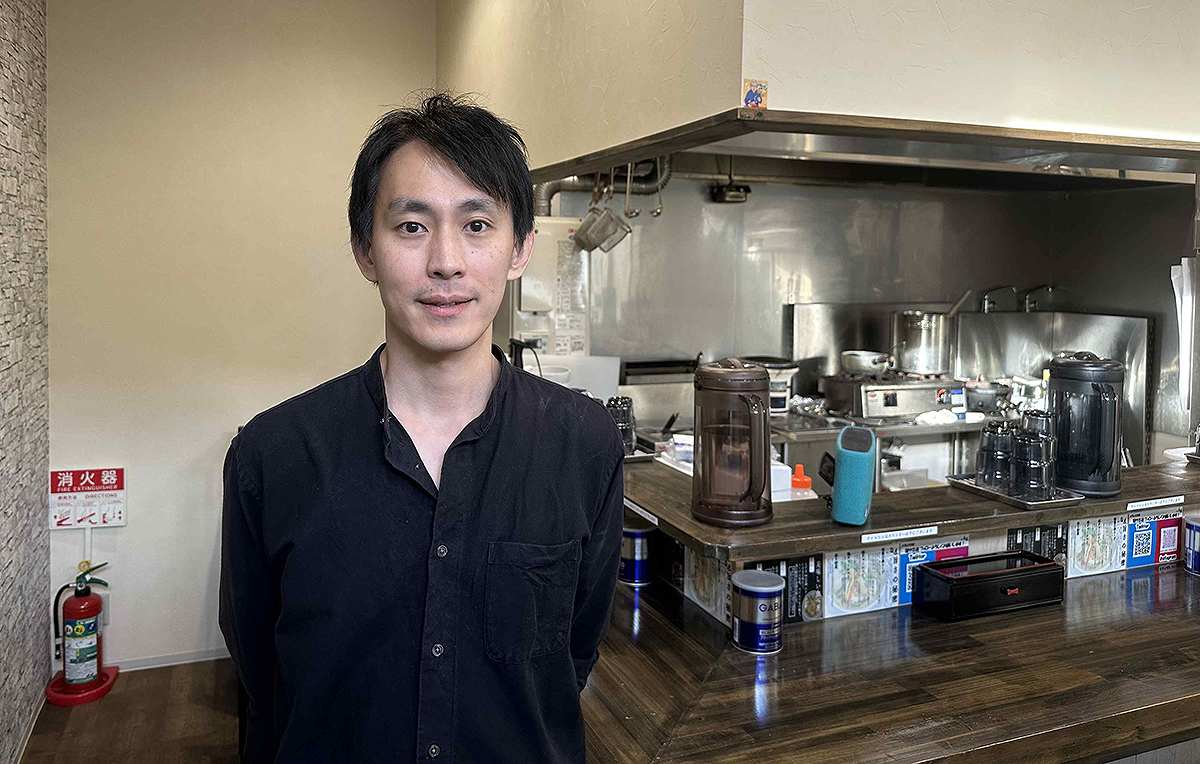
“I aim to make ramen that is approved by Japanese people,” Choi says.
Reflecting on the path that led him to open Shido, Choi said: “I trained at a French restaurant in Ginza for a little over a year, and it completely changed my thinking about cooking.”
Choi recounted how he felt a deep respect for a Japanese chef who specialized in modern French cuisine while working in the kitchen of a Ginza outlet that opened in 2015. The chef had a different approach to the other chefs Choi has ever worked with, taking the restaurant business extremely seriously while focusing strongly on the food itself. Choi recalled that the chef was strict but supportive, adding that his boss’ sincerity and approach altered his whole mindset.
Choi, who had worked as a recipe-following chef-for-hire, slowly began questioning the status quo while coming up with ways to make things even better — it is this real world-forged experience that underpins Shido’s wide variety of ramen dishes.
Twisting life-path

Limited edition sweet potato ramen (¥1,100)
Choi completed South Korean military service during his college years and became involved in the music business after graduation. As an aspirational composer, he was a big fan of Ryuichi Sakamoto. However, he notes, “I felt that my talent was limited.”
A turning point came in 2007 during his first visit to Japan on a sightseeing trip, when he met a Japanese woman who eventually became his wife. Choi has lived in Japan since 2008.
He attended a Japanese language school while working full-time for a Japanese company that operated Korean restaurants, eventually spending around five years with the firm.
At the end of that time, his father in Korea passed away. As an only child, Choi returned to his home country for about six months to take care of various family-related issues. He resigned from the Japanese firm and began to seriously contemplate his future. He realized he wanted to “train at a proper restaurant and acquire skills,” which led to his tenure at the French restaurant.
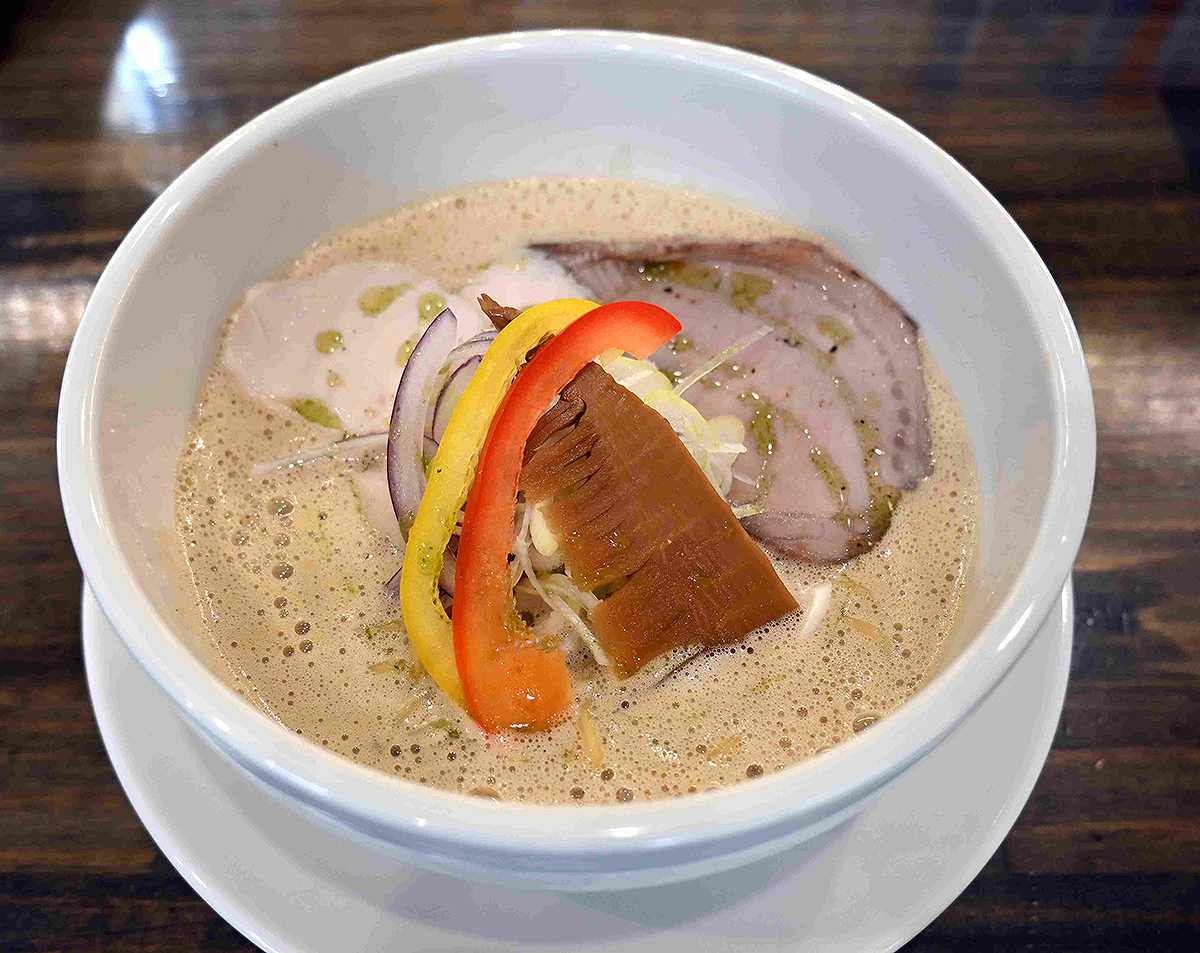
Chicken paitan shoyu (soy sauce) ramen (¥900)
“I have a very exacting personality,” Choi shared. “I can’t cut corners or be lax in my work.” Choi struck me as a man with a delicate disposition, likely due to his time in the world of musical composition. It occurred to me, too, that the culinary world likely allows him to pay close attention to detail while fashioning his own pieces, akin to conceiving and notating music on a score.
Choi recalls thinking, “If I ever open my own restaurant, it will be a ramen shop because I can run it alone.” Additionally, he was a long-term ramen fan and ate it regularly.
He gradually accumulated experience at various eateries with the aim of one day being able to craft his own unique ramen. Following the peak of the Corona pandemic, Choi happened up the vacant premises of a former ramen shop, which eventually became Shido.
-
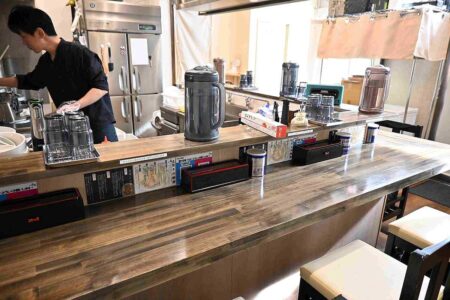
The shop has an L-shaped counter.
-

Lemon juice adds an additional refreshing flavor.
-
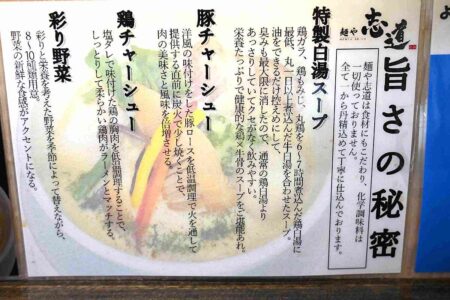
A detailed description of the outlet’s ramen is attached to the counter.
-
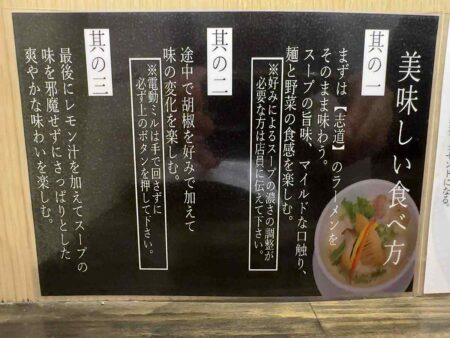
Tips on how best to enjoy the Shido’s ramen dishes are attached to the counter.
After striving for two months, Choi opened the outlet last September.
Internet-savvy Choi uses social networking services such as Instagram to disseminate information about his shop, with the result that customers hail from near and far.
The shop is named after his son, Shido. Though Choi and his wife divorced about six years ago, his love for his son remains as strong as ever.
“If you name a shop after your child, it makes you want to do your best and inspires you to raise your offspring well,” he said with a gentle smile.
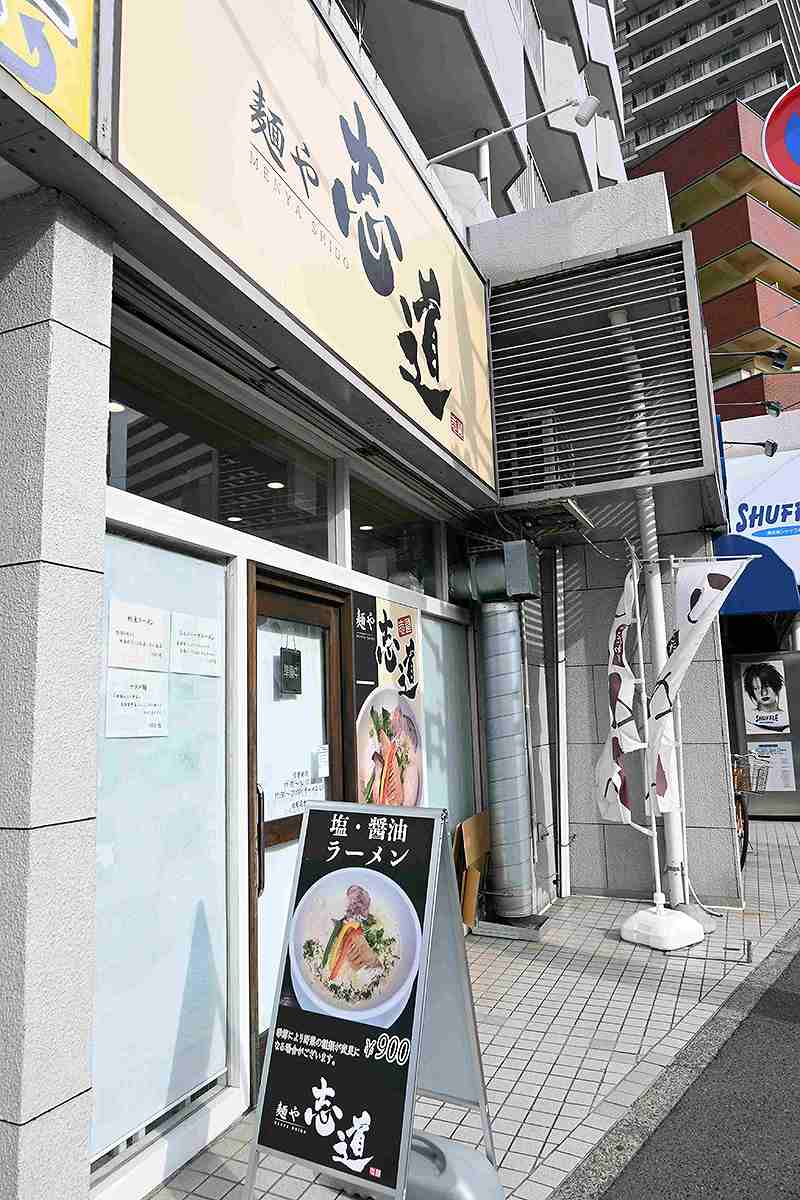
Menya Shido
13-1 Nemoto, Matsudo City, Chiba Prefecture. Lunch: 11:00 a.m. to 2:00 p.m. Dinner: 5:30 p.m. to 9:00 p.m. Closed on Wednesdays.
For more information visit the shop’s Instagram account: menya_sidou_paitan_ramen
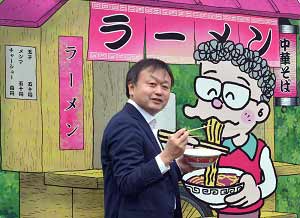
Futoshi Mori, Japan News Senior Writer
Food is a passion. It’s a serious battle for both the cook and the diner. There are many ramen restaurants in Japan that have a tremendous passion for ramen and I’d like to introduce to you some of these passionate establishments, making the best of my experience of enjoying cuisine from both Japan and around the world.
Japanese version
【ラーメンは芸術だ!】千葉・松戸のラーメン「麺や志道」、ソウル出身の店主が作るボーダーレスな味

"JN Specialities" POPULAR ARTICLE
-

The Japan News / Weekly Edition (12/12-12/18)
-

English-language Kabuki, Kyogen Entertain Audiences in Tokyo; Portland State University Professor Emeritus, Graduates Perform
-

Noodle Dining Shunsai / Rich Oyster Ramen to Savor at Odasaga; Experienced 68-year-old Owner Creates Numerous Ramen Varieties
-

The Japan News / Weekly Edition (12/5-12/11)
-

People Keep Loved Ones’ Ashes Close in Special Jewelry, Small Urns as Unique Way to Memorialize Them
JN ACCESS RANKING
-

Keidanren Chairman Yoshinobu Tsutsui Visits Kashiwazaki-Kariwa Nuclear Power Plant; Inspects New Emergency Safety System
-

Imports of Rare Earths from China Facing Delays, May Be Caused by Deterioration of Japan-China Relations
-

University of Tokyo Professor Discusses Japanese Economic Security in Interview Ahead of Forum
-

Japan Pulls out of Vietnam Nuclear Project, Complicating Hanoi’s Power Plans
-

Govt Aims to Expand NISA Program Lineup, Abolish Age Restriction



